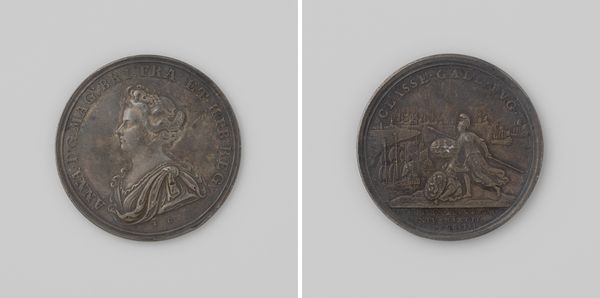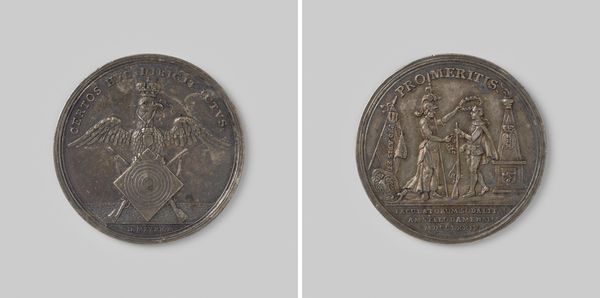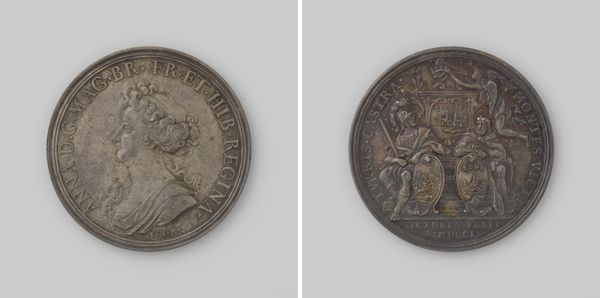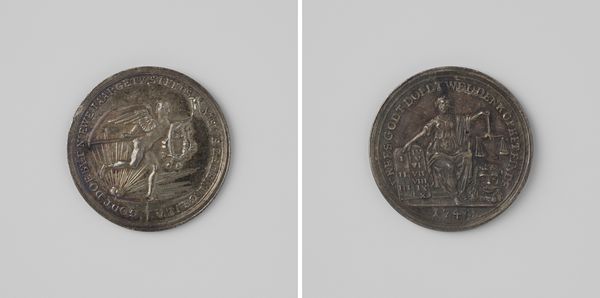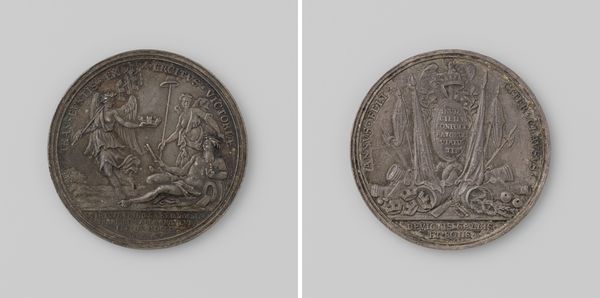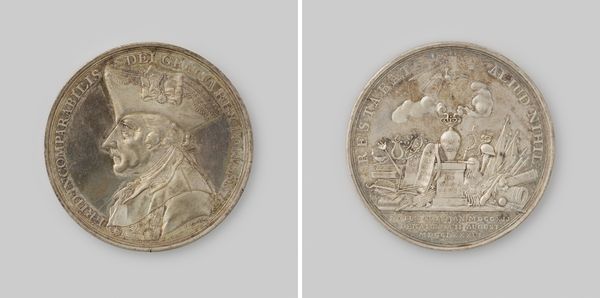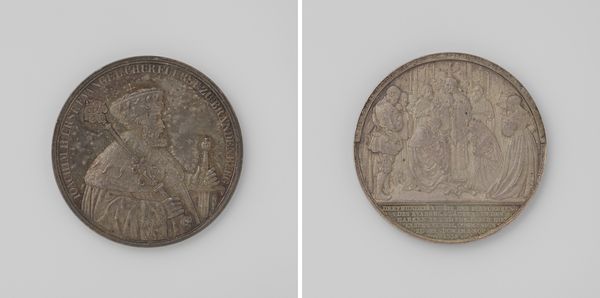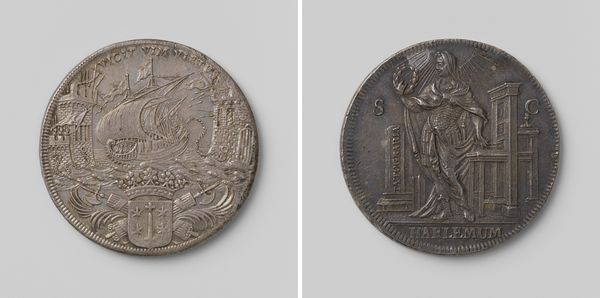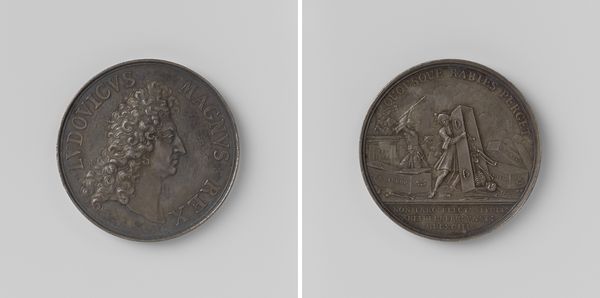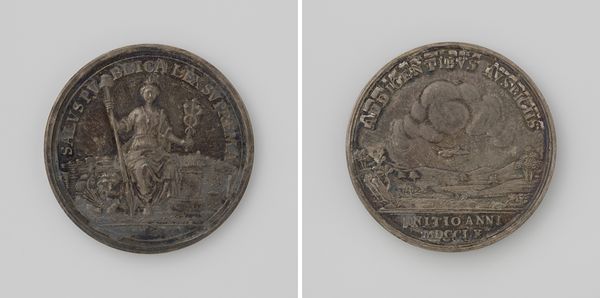
Vrede van Teschen, ter ere van Jozef II, Duits keizer en Frederik II de Grote, koning van Pruisen 1779
0:00
0:00
print, metal, relief, sculpture, engraving
#
portrait
#
neoclacissism
# print
#
metal
#
sculpture
#
relief
#
sculptural image
#
sculpture
#
history-painting
#
engraving
Dimensions: diameter 4.3 cm, weight 279 gr
Copyright: Rijks Museum: Open Domain
Curator: At first glance, the medal appears rather austere, but that might be simply a reflection of its age, it presents like a stoic memorial to an important historical moment. Editor: It does seem rather solemn. But perhaps this seriousness aligns perfectly with its function and the broader political landscape it reflects. Curator: Exactly. What we’re seeing is the “Vrede van Teschen, ter ere van Jozef II, Duits keizer en Frederik II de Grote, koning van Pruisen," created in 1779 by Johann Christian Reich. This metal piece commemorates the Treaty of Teschen. Editor: Fascinating! The symbolic weight is immediate. I see laurel wreaths, often signifying victory or peace, encircling what looks like the profiles of the two leaders. It presents quite the classical idiom, especially with what appears to be Roman lettering. Curator: You're right on point. The medal utilizes the language of neoclassicism to communicate power and stability. Framing this treaty in a narrative of progress is something we should notice. Whose peace does this narrative really foreground? Was it accessible and advantageous to everyone? Editor: That is such a good point; while Reich aims to portray the event as something positive for both sides, is it not actually to erase the lived consequences that may or may not reflect progress equally among all? Curator: The images are carefully selected, the wreaths symbolize this shared achievement while at the same time allude to Roman imperial aesthetics which could have aimed to highlight the importance of leadership and legacy during times of both internal conflicts and outward demonstrations of success. It speaks to a very exclusive club. Editor: I agree; this work speaks more deeply, acting as a reminder of shared history while also sparking curiosity and deeper reflection.
Comments
No comments
Be the first to comment and join the conversation on the ultimate creative platform.
